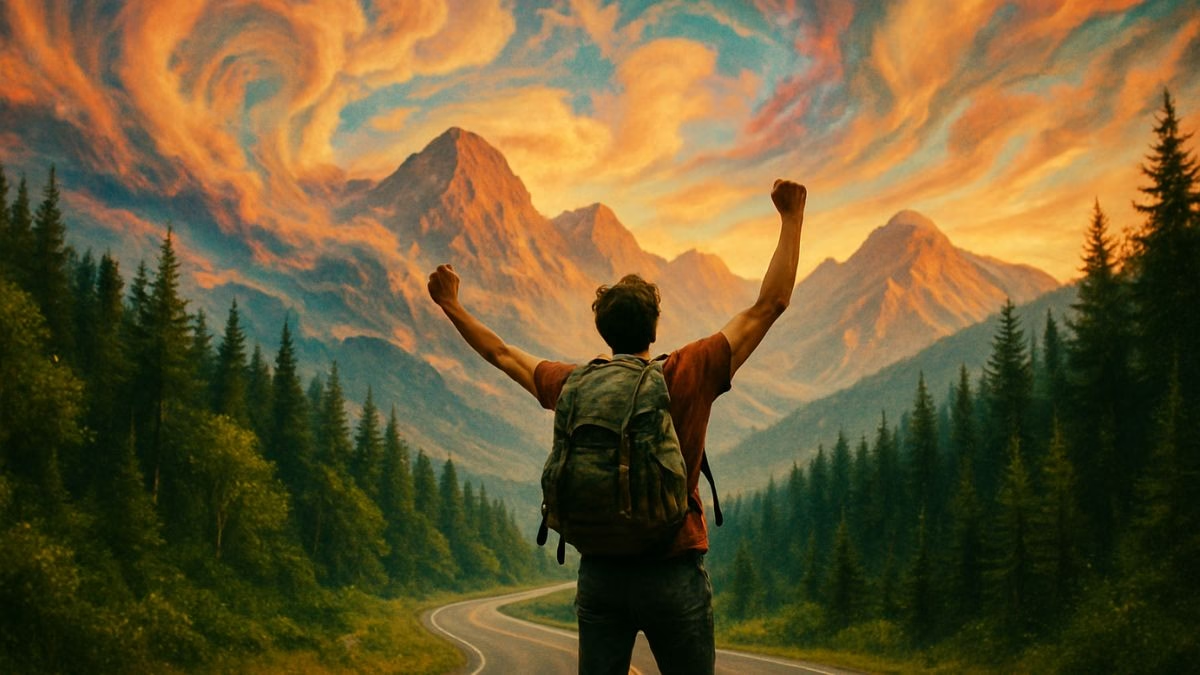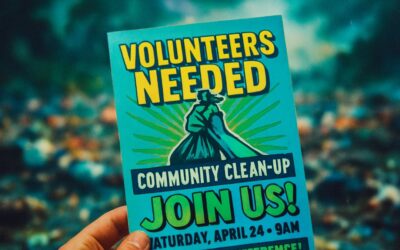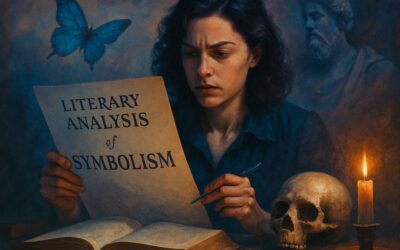How to Approach This Lesson
Welcome to this session on reflective writing. Unlike other essays where you might argue a point or present facts, a reflective essay is personal. It’s about exploring your own experiences and discovering what you learned from them. The best way to approach this lesson is with an open mind. Think about a meaningful trip you’ve taken—it doesn’t have to be a grand international adventure; a short trip to a new place nearby can be just as impactful. We’re going to learn how to connect a specific travel experience to the bigger picture of personal growth.
The Challenge and The Plan
Our task is to write a reflective essay on the impact of travel on personal growth. The challenge here is to go beyond the clichés. It’s easy to say “travel opened my mind.” It’s much harder to show it. We need to connect concrete experiences—a conversation with a stranger, getting lost in a new city, trying unfamiliar food—to specific changes in our perspective, confidence, or understanding of the world.
This skill is crucial for many university applications and English exam essays that ask you to draw on personal experience.
Here’s our plan to write an essay that is both personal and profound:
- Brainstorm: The “What?” and the “So What?”: We’ll start by brainstorming specific travel memories (the “What?”). Then, for each memory, we’ll ask the most important reflective question: “So what?” (What did I learn? How did it change me?).
- Structure the Reflection: We’ll create a simple but effective structure: an introduction that hooks the reader, body paragraphs that link specific stories to specific growth, and a conclusion that summarizes the transformation.
- Show, Don’t Tell: This will be our mantra. We’ll focus on using descriptive, sensory language to bring our travel stories to life, allowing the reader to experience the growth alongside us.
- Draft and Refine: We’ll put it all together in a draft and then polish it, ensuring the connections between the stories and the lessons are crystal clear.
Let’s begin the journey.
Step-by-Step Walkthrough: Crafting the Reflection
Step 1: The “What?” and the “So What?”
Let’s pick a hypothetical trip: a solo backpacking trip through a small, rural part of a foreign country where you don’t speak the language well.
| What? (The Experience) | So What? (The Personal Growth) |
| Getting completely lost in a village with no map or phone signal. Had to ask for directions using gestures. | Learned resilience and problem-solving. Discovered that communication is more than just words and that most people are kind and willing to help. Lost my fear of being helpless. |
| Sharing a simple meal with a local family who invited me into their home. | Understood that happiness and generosity are not tied to material wealth. Learned to appreciate simplicity and genuine human connection over superficial things. |
| Seeing vast, ancient landscapes that were completely different from my urban home. | Gained a new perspective on my own life and problems. Realized how small my own concerns were in the grand scheme of things. Felt a sense of humility and awe. |
This gives us three solid body paragraphs, each with a clear story and a clear lesson.
Step 2: Structure the Essay
- Introduction: Start with a hook—a vivid image or a question about travel. Briefly introduce the specific trip and then state your thesis: that this journey was transformative, teaching you lessons in resilience, connection, and perspective.
- Body Paragraph 1 (Resilience): Tell the story of getting lost. Use descriptive language to convey the feeling of panic, and then the relief and learning that followed.
- Body Paragraph 2 (Connection): Describe the meal with the local family. Focus on sensory details—the taste of the food, the look of their home, the sound of their laughter.
- Body Paragraph 3 (Perspective): Paint a picture of the ancient landscape. Contrast it with your life back home and explain the internal shift it caused.
- Conclusion: Summarize the three main lessons learned. Reiterate your thesis in a new way. End with a final thought about the lasting impact of travel on who you are today.
Step 3: Show, Don’t Tell
“Telling” is stating a fact: “The trip made me more confident.”
“Showing” is painting a picture: “Before the trip, I wouldn’t have dared ask a stranger for help. After spending an hour communicating with a smiling, elderly woman using nothing but hand gestures and a shared sense of humor to find my way back to the main road, I walked away with more than just directions; I walked away with the newfound certainty that I could handle whatever came my way.”
We will use this “showing” technique throughout our draft.
Step 4: Draft and Refine
Bad Example (All “Telling” and Clichés):
Travel is a great way to learn about yourself and the world. I went on a trip and it was a very good experience. I learned to be more independent and that people are the same everywhere. It also taught me that nature is beautiful. This trip changed my life and I am now a better person.
This is generic, boring, and completely unconvincing. It lacks any specific detail or genuine reflection.
First Draft (Using our structure and ideas):
I used to think of travel as a checklist of sights to see. But my first solo trip taught me something different. Backpacking through a rural region taught me about resilience, human connection, and my own place in the world.
I remember getting lost. My phone was dead. I felt panicked but had to ask for help using gestures. An old woman helped me. This taught me to be resilient.
Later, a family invited me for dinner. Their house was simple, but they were so happy. It made me realize that money isn’t everything and connection is more important.
I also saw huge mountains. They made me feel small and my problems seemed unimportant. This gave me perspective.
In conclusion, the trip was very important. It taught me resilience, connection, and perspective.
This draft has a solid structure, but it’s still a bit basic. The “showing” is weak. Let’s refine it with richer language and deeper connections.
Final Polished Version:
I once believed that the purpose of travel was to see things—to tick off landmarks from a list. My dog-eared guidebook was my shield and my plan was my scripture. It was only when my plan fell apart, on a dusty, unnamed road in a country whose language I couldn’t speak, that my real journey began. That solo trip did more than show me new landscapes; it reshaped my inner one, teaching me profound lessons in resilience, the beauty of human connection, and the humbling gift of perspective.
The first lesson came from being utterly lost. Panic, cold and sharp, set in as I realized my phone was dead and the sun was setting. But desperation forced me into action. I approached an elderly woman, and through a clumsy ballet of hand gestures and broken words, I tried to explain my predicament. She didn’t just point the way; she walked with me, her warm smile bridging the linguistic chasm between us. In that moment, the fear of helplessness I had carried my whole life simply dissolved, replaced by a quiet confidence that I could, somehow, always find my way.
A few days later, another unexpected encounter stripped away another layer of my preconceived notions. A family, seeing me looking for a place to eat, waved me over to their modest home. We shared a simple meal of rice and vegetables on their porch. They had very little by my urban standards, yet their home overflowed with a richness of laughter and generosity that I had rarely witnessed. I understood then that the connections we forge, not the possessions we accumulate, are the true measure of a wealthy life.
The final lesson was delivered not by a person, but by the land itself. Standing at the edge of a vast, silent canyon, watching millennia of history carved into stone, my own anxieties and ambitions seemed laughably small. The world was so much bigger, older, and more complex than my narrow corner of it. It was a humbling experience, not one that diminished me, but one that freed me, placing my own life within a grander, more meaningful context.
In the end, I returned home with more than just souvenirs. I carried a new understanding that the most valuable parts of travel are often the unscripted moments: the detours, the mistakes, and the unexpected connections. I had set out to see the world, and in the process, I had finally begun to see myself.
Wrap-Up & Your Challenge
Key elements of a great reflective essay:
- Go beyond the surface: Don’t just state what happened, explore what it meant.
- Connect the specific to the universal: Link your personal stories to broader themes of growth, learning, and change.
- Show, Don’t Tell: Use vivid, sensory details to bring your experiences to life for the reader.
- Have a clear structure: Guide your reader through your reflection with a clear introduction, body, and conclusion.
Your Optional Writing Challenge:
It’s your turn to dig into your own experiences. Write a reflective essay on one of the following topics:
- Reflect on a time you failed at something and what you learned from the experience.
- Reflect on the impact a particular book, movie, or piece of music has had on your life.
Choose a topic, use the “What?” and “So What?” method to brainstorm, structure your essay, and focus on showing your journey of reflection. The more you practice turning experience into insight, the more powerful your writing will become. Happy reflecting!










0 Comments